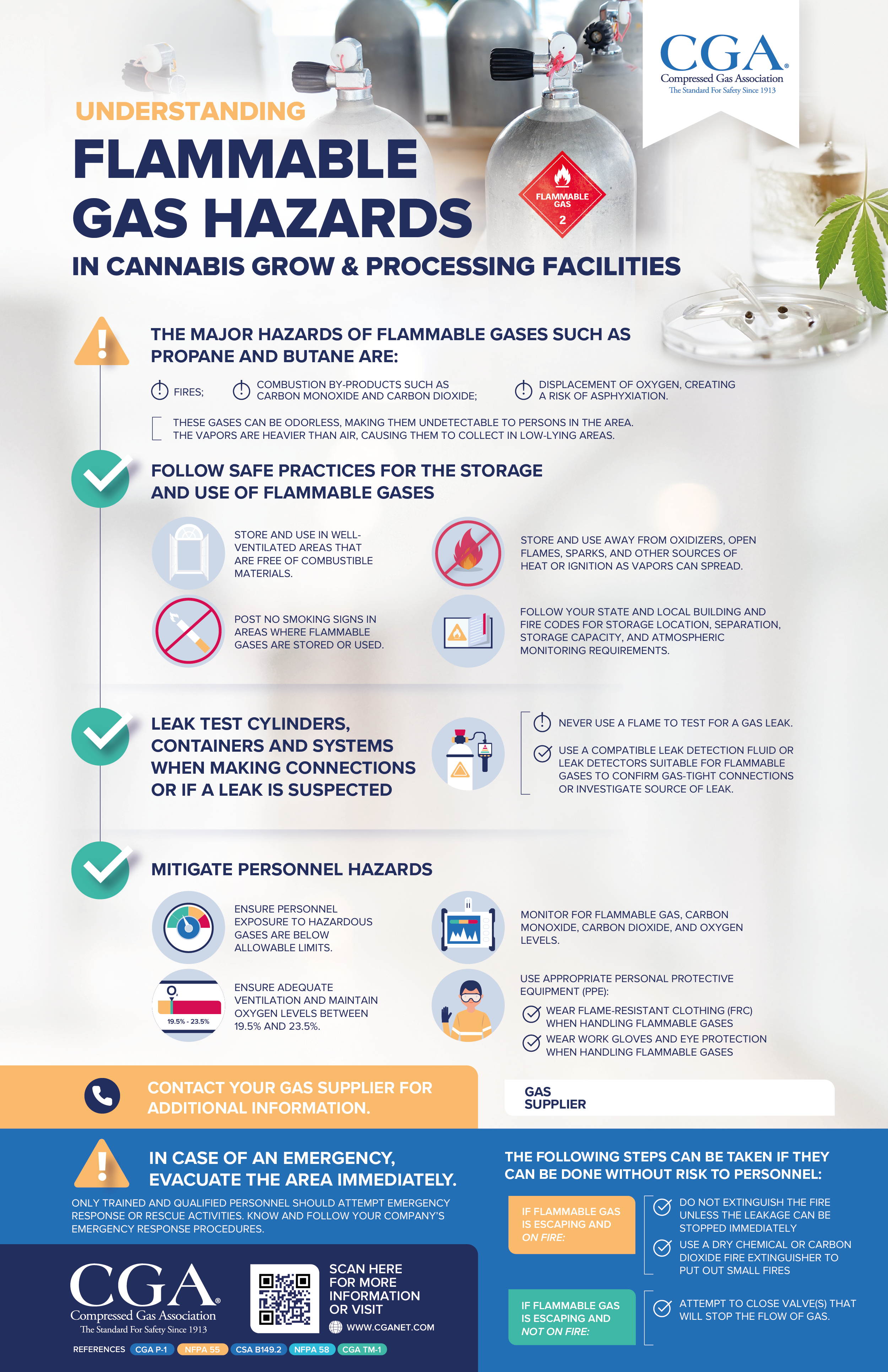Your Flammable Gas Safety Resource Center
Understanding Flammable Gas Hazards
Flammable gases have an extremely wide range of domestic, industrial, commercial, agricultural, and fuel uses in applications such as space heating, crop drying and curing, heat treating, and vehicle fuels. Flammable gases form a flammable mixture when mixed with air. The major hazard associated with the handling of flammable gas products is fire.
There are many safe handling, equipment, and storage requirements to consider when working with flammable gases. This safety poster, provided by the Compressed Gas Association, provides basic information to aid users in understanding flammable gas hazards and related safety precautions.
The specific gas product being used can pose other hazards in addition to being flammable. The container label and safety data sheet (SDS) provide detailed hazard information and handling precautions. Always read and understand the label and the SDS before using any product and follow the instructions and safety precautions provided by your product supplier.
Flammable Gas Safety Reminders
- Follow safe practices for the storage and use of flammable gases.
- Leak test cylinders, containers, and systems when making connections or if a leak is suspected.
- Provide adequate ventilation and atmospheric monitoring to ensure that safe atmospheres are maintained.
- Use appropriate personal protective equipment (PPE).
Poster Downloads
CGA offers safety posters as educational resources to support the safe use of our industry’s products and equipment. It is important to note that these posters are not a substitute for reading and following codes and regulations, industry standards, and supplier instructions. Download your free poster today!
NOTE – Use self-print files for printing at your home or office, and full bleed files for professional printing.
Additional Resources
CGA Publications
CGA eLearning Modules
CGA Free Safety Materials
- CGA SP-6, Safety Poster (Industrial), Separating Incompatible Gases
- CGA SP-8, Safety Poster (Industrial), Wear Recommended Personal Protective Equipment
Related Codes & Standards
Product Information: Flammable Gases
Flammable gases are generally defined by the U.S. Department of Transportation (DOT) and Transport Canada as those gases that form a flammable mixture when mixed with air in concentrations of 13% or less (by volume), or the flammable range with air is wider than 12% regardless of the lower limit. These limits are determined at a pressure of 14.7 psia (101.3 kPa, abs) and a temperature of 68 °F (20 °C). There can be other gases that exhibit flammable properties but do not meet DOT’s definition. The user shall always refer to the SDS of the gas for specific information on its hazards.
The major hazard associated with the handling of flammable compressed gases is fire. The three basic conditions that need to be met simultaneously to ignite a flammable gas are:
- concentration of the gas (fuel) within the flammable limits;
- air or an oxidizing gas; and
- source of ignition.


